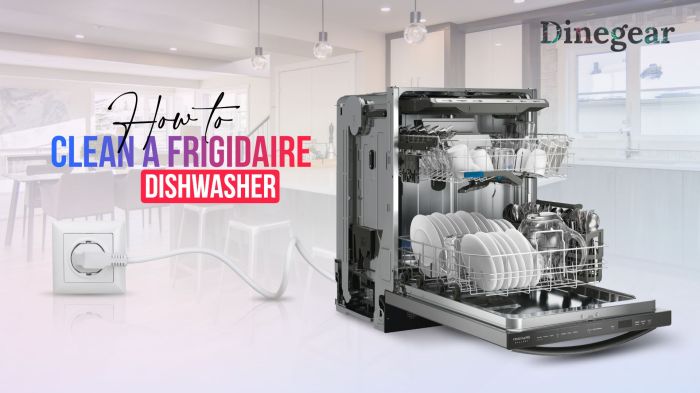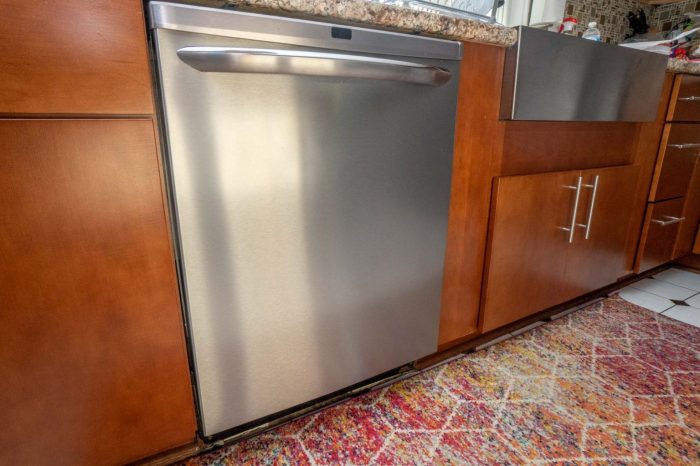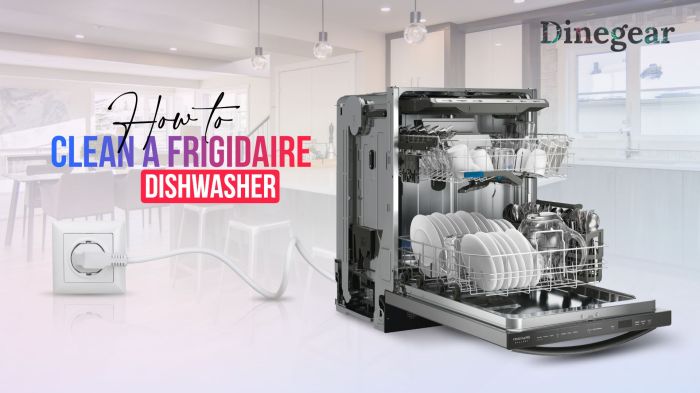Clean Hairbrushes and Combs: A seemingly simple task, yet crucial for maintaining healthy hair and a clean scalp. Unclean brushes and combs harbor bacteria, leading to potential scalp issues and hair problems. This guide dives deep into the importance of regular cleaning, exploring different methods, tools, and frequencies, ensuring your hair care routine is as hygienic as possible.
From natural bristle brushes to synthetic wonders, we’ll cover it all.
Maintaining the cleanliness of your hairbrushes and combs is essential for overall hygiene. Bacteria and dirt can build up, leading to issues like scalp irritation, dandruff, and even hair breakage. This comprehensive guide provides practical insights into the best practices for keeping your hair tools sparkling clean and your hair looking its best. It also explores the specifics of cleaning various brush types and materials, offering tailored solutions to your individual needs.
Importance of Clean Hairbrushes and Combs
Keeping your hairbrushes and combs clean is more than just a matter of aesthetics; it’s a crucial aspect of hygiene and overall well-being. Regular cleaning prevents the buildup of bacteria, fungi, and dead skin cells, protecting your scalp and hair from potential health risks. Clean tools contribute to healthier hair growth and a more comfortable scalp experience.Regular cleaning is essential to maintain a healthy scalp and hair, and this extends beyond just the visible dirt.
Unseen contaminants, including bacteria, can accumulate on your hairbrushes and combs, leading to potential scalp issues and impacting hair health. This proactive approach to cleaning safeguards your hair and scalp from potential problems, promoting a healthier and more comfortable experience.
Hygiene and Health Risks Associated with Unclean Tools
Maintaining the cleanliness of your hairbrushes and combs is crucial for preventing the spread of bacteria and fungi. Unclean tools can harbor various microorganisms, potentially leading to scalp infections, dandruff, or other skin irritations. The accumulation of dead skin cells, hair products, and environmental pollutants can create a breeding ground for harmful organisms. This can manifest as discomfort, itching, or even more serious conditions if left unaddressed.
For example, a common issue is scalp irritation from unclean tools, which can lead to persistent itching and flaking.
Impact on Hair Health and Scalp Condition
Clean hairbrushes and combs are essential for promoting healthy hair and a comfortable scalp. Using unclean tools can lead to hair breakage, tangles, and scalp dryness. Regular cleaning removes product buildup, debris, and dead skin cells, allowing for better hair distribution and reducing friction. This can improve the overall health and appearance of your hair and scalp, preventing damage and promoting healthy growth.
Using clean tools also enhances the effectiveness of hair care products, as they can be properly distributed without encountering residue from previous uses.
Benefits for Overall Well-being
Maintaining clean hairbrushes and combs extends beyond just hair health; it contributes to overall well-being. A clean scalp and healthy hair contribute to a positive self-image and increased confidence. This can have a significant impact on mental and emotional health, fostering a sense of cleanliness and personal care. Furthermore, clean tools ensure the longevity of your brushes and combs, reducing the need for frequent replacements.
Importance for Specific Hair Types and Scalp Conditions
The importance of cleaning hairbrushes and combs is amplified for individuals with specific hair types or scalp conditions. People with oily hair or those prone to dandruff need more frequent cleaning to prevent the buildup of oils and dead skin cells, which can exacerbate these conditions. Individuals with sensitive scalps should also prioritize cleaning to avoid potential irritations.
This is especially true for those who experience frequent itching or inflammation. Using clean tools helps maintain a healthy environment for the scalp, regardless of hair type or condition. For instance, individuals with eczema or psoriasis may experience worsened symptoms if their hair tools are not properly cleaned and maintained, potentially leading to more frequent flare-ups.
Methods for Cleaning Hairbrushes and Combs
Keeping your hairbrushes and combs clean is crucial for maintaining healthy hair and preventing the buildup of product residue, dirt, and bacteria. Regular cleaning helps extend the life of your tools and ensures a hygienic experience. This article explores various cleaning methods for different brush types, from natural bristle to synthetic, offering step-by-step guides and comparisons.A clean brush not only feels better in your hand but also contributes to healthier hair growth by preventing product buildup and minimizing the spread of bacteria.
Proper cleaning methods are vital for maintaining hygiene and ensuring your hair tools last longer.
Cleaning Natural Bristle Hairbrushes
Natural bristle brushes, often made from boar or other animal hair, are prized for their ability to detangle and distribute natural oils. However, their delicate nature requires a gentle approach. A gentle hand wash is the most effective method for these brushes.
- Gather your supplies: Mild shampoo, a clean basin or sink, lukewarm water, a soft cloth or sponge.
- Prepare the brush: Carefully remove any large tangles or debris from the bristles. Gently massage the brush head in the basin with lukewarm water.
- Apply the shampoo: Apply a small amount of mild shampoo directly to the brush bristles.
- Wash and rinse: Gently work the shampoo into the bristles using your fingers or a soft cloth. Rinse thoroughly under lukewarm water until all traces of shampoo are gone.
- Dry the brush: Lay the brush head flat on a clean towel and gently pat the bristles dry. Avoid twisting or wringing the brush, as this can damage the bristles.
- Air dry: Allow the brush to air dry completely in a clean, dust-free area. Avoid direct sunlight or heat.
Cleaning Synthetic Bristle Hairbrushes
Synthetic bristle brushes are known for their durability and affordability. They are generally more resilient and can often tolerate more aggressive cleaning methods. One of the easiest methods is using the dishwasher.
Keeping your hairbrushes and combs clean is crucial for healthy hair. A build-up of product, dirt, and even bacteria can lead to scalp issues. Wondering what all that gunk is? It’s important to understand the proper cleaning methods, as well as what YW might mean in certain contexts. For example, if you’re seeing YW in a chat, checking out What Does YW Mean can help you decipher the shorthand.
Regularly cleaning your brushes and combs is a small step that makes a big difference for your hair health overall.
- Check for dishwasher safety: Always check the manufacturer’s instructions to ensure your brush is dishwasher-safe.
- Remove any large debris: Carefully remove any large tangles or debris from the bristles.
- Place in a dishwasher-safe container: If the brush is dishwasher-safe, place it in a suitable container or basket in the top rack of the dishwasher.
- Use dish soap: Add a small amount of dish soap to the dishwasher detergent dispenser.
- Run the dishwasher: Run the dishwasher on a normal cycle. Avoid using high heat or aggressive drying cycles.
- Dry thoroughly: Allow the brush to air dry completely after the cycle is complete.
Cleaning Wooden Hairbrushes
Wooden hairbrushes are appreciated for their natural feel and potential for promoting healthy hair. They require a delicate cleaning approach.
- Gather your supplies: Mild dish soap, a clean basin or sink, lukewarm water, a soft cloth or sponge.
- Prepare the brush: Carefully remove any large tangles or debris from the bristles.
- Apply the soap: Apply a small amount of mild dish soap to a soft cloth or sponge.
- Wash gently: Gently clean the wooden part of the brush with the soapy cloth, being careful not to scrub too hard. Avoid getting water directly on the wooden base.
- Rinse thoroughly: Rinse the brush thoroughly with lukewarm water until all traces of soap are gone.
- Dry completely: Lay the brush head flat on a clean towel and gently pat the bristles dry. Avoid twisting or wringing the brush. Allow it to air dry in a clean, dry space.
Comparison of Cleaning Methods
| Hairbrush Material | Cleaning Method | Cleaning Agent | Time Required |
|---|---|---|---|
| Natural Bristle | Gentle hand wash | Mild shampoo | 5-10 minutes |
| Synthetic Bristle | Dishwasher safe | Dish soap | 1-2 minutes |
| Wooden | Gentle hand wash with a cloth | Mild dish soap | 5-7 minutes |
Tools and Materials for Cleaning
Keeping your hairbrushes and combs clean is crucial for maintaining their longevity and preventing the spread of bacteria and fungi. Regular cleaning also ensures a hygienic and pleasant hair styling experience. The right tools and materials play a vital role in this process, ensuring effective and efficient cleaning.Effective cleaning relies on selecting the correct tools and materials, which will depend on the brush or comb type.
Using the wrong tools can damage the bristles or the comb’s structure, potentially leading to a less effective clean and a shorter lifespan for your tools. Understanding the different materials and the specific needs of each type will lead to optimal cleaning results.
Keeping my hairbrushes and combs clean is crucial for healthy hair, and honestly, it’s a pretty important part of my self-care routine. Just like I’m really excited about Megan Thee Stallion’s new album Traumazine , I’m equally committed to maintaining a clean and hygienic hair care routine. Plus, clean tools prevent build-up and make styling so much easier.
It’s a small thing, but it makes a big difference in the long run!
Essential Tools and Materials
Proper cleaning requires a range of tools and materials. These tools should be chosen carefully to avoid damaging the brush or comb and ensure effective cleaning. This section details the essential tools and materials.
- Soft-bristled brushes are ideal for delicate brushes, while stiff-bristled brushes are suitable for those with more durable bristles. Choosing the appropriate brush type ensures that the bristles are not damaged during the cleaning process.
- Mild dish soap or hairbrush-specific cleaners are effective for removing dirt and product buildup. These are gentler on the bristles and do not damage them. Specific cleaners for hairbrushes are formulated to avoid stripping natural oils from the bristles.
- Warm water is necessary for dissolving dirt and product buildup. Using hot water can damage the brush’s structure and may strip the bristles of their natural oils.
- A small bowl or container for mixing the cleaning solution and rinsing the brush.
- A clean towel or cloth for drying the brush.
Qualities of Effective Cleaning Agents, Clean Hairbrushes and Combs
Selecting cleaning agents is critical to achieving a thorough and effective clean without compromising the integrity of the hairbrush or comb. These agents should be gentle, effective, and safe for the materials of the brush or comb.
- Mildness is crucial to prevent damage to the brush or comb’s materials. Harsh chemicals can damage the bristles, the handle, and the overall structure of the brush or comb.
- Effectiveness in removing dirt and product buildup is vital. Effective cleaning agents will thoroughly remove dirt, oil, and product buildup.
- Safety for the hairbrush or comb material is paramount. Some cleaning agents might be too harsh and strip natural oils from the bristles, which are vital for their health and longevity.
Selecting Appropriate Cleaning Tools
The type of hairbrush or comb dictates the best cleaning tools. Understanding the type of material and construction of the brush or comb is essential for choosing the appropriate tools.
- Natural bristle brushes may require a gentler approach to avoid damaging the bristles.
- Synthetic bristle brushes are more resilient and can withstand a wider range of cleaning methods.
- Wooden combs are sensitive to moisture and require a delicate cleaning process. Excessive water can cause warping or damage to the wood.
Recommended Cleaning Products and Their Benefits
Using the correct cleaning products can significantly enhance the effectiveness and safety of the cleaning process. Choosing the right product ensures a thorough clean without harming the brush or comb.
| Product | Benefits |
|---|---|
| Mild dish soap | Gentle, readily available, and effective at removing dirt and product buildup. |
| Hairbrush-specific cleaner | Formulated for hairbrushes, often containing ingredients that are gentler on the bristles and do not strip natural oils. |
| Baking soda | A natural abrasive that can effectively remove stubborn dirt and product buildup. |
Importance of Using Appropriate Tools
Using the right tools is critical for optimal cleaning results. Choosing the wrong tools can damage the brush or comb and result in an ineffective cleaning. The proper tools ensure a thorough clean while preserving the integrity of the hairbrush or comb.
Cleaning Frequency and Maintenance
Keeping your hairbrushes and combs clean is more than just a hygiene practice; it’s crucial for maintaining their longevity and preventing damage to your hair. Regular cleaning and proper maintenance will ensure your styling tools last longer and work efficiently, saving you money in the long run. Ignoring these practices can lead to accumulated product buildup, hair tangles, and even breakage.Regular maintenance is essential for prolonging the life of your hairbrushes and combs.
By understanding the appropriate cleaning frequency and implementing preventive measures, you can keep your tools in excellent condition. This extends beyond just cleanliness; it involves a proactive approach to preserving the integrity and effectiveness of your styling tools.
Cleaning Frequency Recommendations
Understanding the optimal cleaning frequency for your hairbrushes and combs depends on several factors, including the type of bristles, your usage patterns, and your hair type. Daily brushing or combing can lead to faster build-up, requiring more frequent cleaning compared to less frequent use. For example, individuals who use their brushes daily for styling will need to clean them more often than those who only use them occasionally.
Optimal Cleaning Frequency Table
This table provides a general guideline for cleaning frequency based on common hairbrush materials and usage patterns. Note that individual needs may vary.
Keeping your hairbrushes and combs clean is crucial for healthy hair, and a great way to treat yourself after a long day is with some homemade bath salts. Making your own bath salts is a fun and relaxing project, and the soothing aroma can be a wonderful addition to your self-care routine. For example, consider a lavender-infused blend.
Plus, the natural ingredients in Make Homemade Bath Salts are often gentler on your skin than store-bought options, which further supports the importance of clean hairbrushes and combs in maintaining healthy hair and scalp.
| Hairbrush Material | Usage Frequency | Cleaning Frequency |
|---|---|---|
| Natural Bristle | Daily | Weekly |
| Synthetic Bristle | Daily | Bi-weekly |
| Natural Bristle | 3-4 times a week | Bi-weekly |
| Synthetic Bristle | Less than 3 times a week | Monthly |
Preventing Build-up and Damage
Regular cleaning is essential to prevent build-up of product residue, hair debris, and dirt, which can cause damage to your hairbrushes and combs over time. Proper storage also plays a significant role in preventing damage.Preventing build-up and damage involves proactive steps. For example, storing your brushes in a designated area can prevent them from getting exposed to dust and debris.
Avoid placing them in humid environments, as moisture can lead to mold or mildew growth.
Storage Guidelines
Proper storage of your hairbrushes and combs is just as important as cleaning. Store them in a cool, dry place away from direct sunlight to maintain their shape and prevent damage. Consider using a brush cover or a storage container to protect them from dust and dirt.Storing your brushes upright, or in a designated storage area will help maintain their integrity.
This will keep them in good condition and ready for use. Also, avoid storing them in areas prone to high humidity or moisture, which can cause damage.
Troubleshooting and Common Problems

Unclean hairbrushes and combs can lead to a cascade of frustrating problems, from tangled hair to scalp issues. Understanding these problems and their causes is key to maintaining healthy hair and a happy head. By addressing these issues proactively, you can prevent further damage and keep your hair looking its best.Addressing problems stemming from unclean brushes and combs is crucial for maintaining healthy hair and a comfortable scalp.
This section delves into common issues, their underlying reasons, and actionable solutions to keep your hair looking and feeling its best.
Hair Tangling
Frequent tangles can be a significant annoyance and a sign of buildup in your brushes and combs. Hair tangles are often exacerbated by product buildup, dead skin cells, and dust particles accumulating on the bristles or teeth. Regular cleaning removes these irritants, making combing and styling smoother and less frustrating. A buildup of product or dirt can cause friction, making the hair more prone to knotting and tangling.
Using a detangling spray or serum can help to ease tangles, but if the problem persists, it’s important to check for and address the underlying buildup.
Hair Breakage
Unclean hairbrushes and combs can contribute to hair breakage. Dirt, product buildup, and debris trapped in the bristles can cause friction and damage the hair cuticle, leading to breakage. The damage may be particularly noticeable in dry or already weakened hair. This friction, when repeated, can lead to split ends and hair loss. Using a wide-tooth comb on wet hair or a brush with soft bristles can help prevent breakage.
Scalp Issues
Scalp issues like dandruff, itching, and irritation can also stem from unclean hairbrushes and combs. Accumulated product residue, dead skin cells, and bacteria can contribute to these problems. The bacteria buildup can lead to inflammation and discomfort. Regularly cleaning your brushes and combs can help maintain a healthy scalp environment and prevent these issues.
Specific Brush Types and Materials
The cleaning methods vary depending on the brush type and material. Natural bristle brushes, for instance, might require a different approach than synthetic ones. Natural bristle brushes can benefit from a gentler cleaning process to avoid damaging the bristles. For example, using a mild shampoo and a soft cloth will be sufficient for natural bristles. Synthetic brushes might be cleaned with a more vigorous approach, using a mild detergent or soap.
Troubleshooting Guide for Different Brush Types
| Brush Type | Cleaning Method |
|---|---|
| Natural Bristle | Use a gentle shampoo and a soft cloth, avoiding harsh scrubbing. |
| Synthetic | Use a mild detergent or soap and lukewarm water, then rinse thoroughly. |
| Wooden | Clean with a damp cloth, avoiding soaking. |
| Metal | Clean with a damp cloth or a mild soap solution. |
Common Cleaning Mistakes: Failing to clean regularly, using harsh chemicals, neglecting to check for debris.
How to avoid: Regular cleaning, gentle cleaning agents, thorough checks.
Types of Hairbrushes and Combs

Choosing the right hairbrush or comb is crucial for healthy hair and a smooth styling experience. Different brush types cater to various hair textures and needs, influencing both the styling process and the overall health of your hair. Understanding the characteristics of each type empowers you to select the perfect tool for your hair type and desired style.Different brush types are designed to address specific hair concerns, such as detangling, styling, or adding volume.
Selecting the right tool ensures that you’re using the appropriate technique for your hair, minimizing damage and maximizing results. Consider your hair’s thickness, texture, and length when choosing your brush or comb.
Hairbrush Types and Their Features
Various hairbrushes and combs are available, each with unique features designed for specific hair types and styling needs. Round brushes are excellent for creating curls and waves, while detangling brushes are ideal for managing thick, tangled hair.
- Round Brushes: Round brushes are commonly used for styling and adding volume. They are available in various sizes and materials, allowing for versatility in styling. Different diameters provide control over the curl and wave formation. The round shape helps distribute heat evenly during styling, contributing to a smoother and more controlled outcome.
- Detangling Brushes: These brushes are specifically designed to gently remove tangles from thick or coarse hair. Their unique bristles and design minimize breakage during detangling. They are particularly beneficial for individuals with curly, kinky, or heavily textured hair. They usually feature wide, flexible bristles to glide through knots and tangles smoothly.
- Wide-Tooth Combs: Wide-tooth combs are ideal for detangling wet or dry hair, particularly for those with long or thick hair. The wide spacing between the teeth prevents pulling and breakage, making them a crucial tool for daily hair maintenance. Their gentle design minimizes damage during the detangling process.
- Paddle Brushes: Paddle brushes are known for their broad, flat design, ideal for distributing products evenly and styling hair. They can be used for a variety of hair types, but are often favored for thick hair to achieve a smooth, even distribution. They are also effective for adding volume and smoothing out frizz.
How Different Brush Types Affect Hair Health
The type of brush or comb you use directly impacts your hair’s health. A brush designed for thick hair will likely be different from one intended for fine hair. Using the wrong brush can lead to breakage, split ends, and even hair loss.
- Round brushes, when used with heat styling, can potentially cause damage if the heat isn’t distributed evenly or the brush is too harsh. Proper technique and heat protection are essential.
- Detangling brushes, due to their soft and flexible design, minimize damage during the detangling process, preventing breakage.
- Wide-tooth combs, with their wide spacing between teeth, are gentler on the hair, reducing breakage, especially for wet hair.
- Paddle brushes, with their broad surface area, can distribute products evenly and reduce friction, contributing to overall hair health.
Cleaning Procedures Based on Brush Type
The cleaning method should always align with the brush type to maintain its functionality and longevity. Different brush materials require varying cleaning approaches.
- Round brushes with bristles that are prone to tangling should be cleaned thoroughly to remove product buildup and debris.
- Detangling brushes require gentle cleaning due to their flexible bristles to prevent damage.
- Wide-tooth combs need thorough cleaning to eliminate any tangles and debris, ensuring they remain effective.
- Paddle brushes can be cleaned with a brush cleaner or a gentle soap solution. Regular cleaning is essential to maintain their effectiveness in distributing products evenly.
Suitable Hair Types and Brush/Comb Types
The table below highlights the optimal brush types for various hair types.
| Hairbrush Type | Suitable Hair Type | Cleaning Considerations |
|---|---|---|
| Detangling Brush | Thick, tangled hair, curly, kinky | Gentle cleaning methods |
| Wide-tooth Comb | All hair types, especially wet hair | Thorough cleaning to remove tangles |
| Round Brush | Straight, medium to thick hair | Regular cleaning to prevent product buildup |
| Paddle Brush | All hair types, especially thick hair | Thorough cleaning to maintain even product distribution |
Epilogue: Clean Hairbrushes And Combs
In conclusion, maintaining clean hairbrushes and combs is a fundamental aspect of good hair care. Regular cleaning not only promotes hygiene but also significantly impacts hair health and scalp condition. By understanding the different cleaning methods, selecting appropriate tools, and establishing a consistent cleaning schedule, you can ensure a healthy and thriving mane. This guide has provided a comprehensive overview, empowering you to create a hair care routine that prioritizes both hygiene and beauty.




